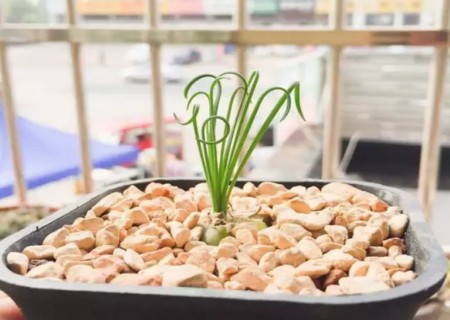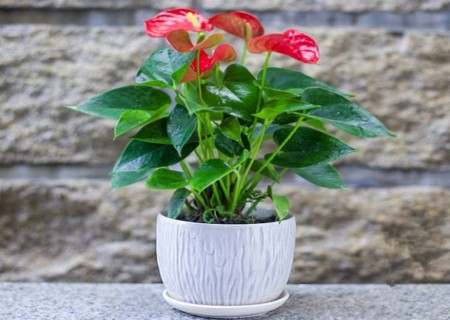How to raise broad-leaf spring grass
After months of deep sleep, although the temperature is already cool, my broad-leaf spring grass just spit out new leaves today. From the point of view of the time of budding, my budding time is much later than that of other flower friends. whether they are flower friends in Dalian or flower friends in the south, their spring grass has already begun to sprout in late summer and early autumn. but I this spring grass has been slow to wake up, very puzzled, but also do not know its mystery.
There are two kinds of spring grass, broad leaves and fine leaves, with similar names, but they belong to different species and genera, isn't it strange? Broad-leaf spring grass is a genus of tiger eye evergreen of Liliaceae, while fine-leaf spring grass is a plant of the genus Sentinel of hyacinth family.
1. Soil
The basin soil is required to be fertile and loose, rich in humus, and has good drainage and permeability. It can be mixed with 3 portions of saprophytic soil or peat soil, 2 parts of vermiculite or sandy soil, and mixed with a small amount of bone powder.
2. Lighting
Sufficient light should be given during the growing period, especially when the new leaves are just sprouting in early autumn, and it is best to put them in a place with sufficient outdoor light, otherwise the leaves will be thin and weak and the curl degree will be poor due to lack of light. it's hard to highlight its unique charm. On the other hand, the leaves of the plants growing in the sunny places are low and stout, twisted and twisted, with high ornamental value.
3. Temperature
The temperature of 10 ℃-20 ℃ should be maintained in winter, the plant can continue to grow in this environment, and no less than 0 ℃ can survive the winter safely.
4. Watering
During the growing period, it is appropriate to keep the soil moist without stagnant water, especially when the new leaves sprout, so as to make the leaves more curly and highlight the characteristics of the varieties. But the growing period can not be long-term drought and lack of water, although the plant will not die, but the growth stagnant, leaves yellowing, or even withered; while long-term stagnant water in the basin soil will cause bulb rot.
5. Fertilization
The peak period of plant growth is from October of each year to April of the following year. Mature thin liquid fertilizer or compound fertilizer is applied once a month to provide sufficient nutrients to make the plant grow vigorously. After the flower is extracted in spring, 0.5% potassium dihydrogen phosphate solution is sprayed 2 to 3 times to promote flowering.
6. Change the basin
When the broad-leaf spring grass is about to germinate in the middle of August every year, change the pot once, cut off the rotten root system when changing the pot, plant the bulb out of the soil surface of about 1prime 3, pour water after planting, keep it in a place with sufficient light, and pay attention to keep the soil moist in the future. soon new leaves will grow from the top of the bulb.
7. Pest control
The broad-leaf spring grass has strong habits and few diseases and insect pests, which are mainly harmful to the bulbs, such as snails and nematodes in the soil. When planting, the soil can be treated with high temperature to kill the insects and eggs in the soil; the diseases are mainly poor soil permeability, and bulb rot caused by long-term stagnant water, as well as leaf tip dryness caused by air dryness, long-term water shortage and other factors, which can be prevented by improving the cultivation environment.
Time: 2019-05-31 Click:
- Prev

How to raise potted spring grass
Today we are going to talk about spring grass, this strange succulent plant looks like springs and weeds, so the meat is like its name, and its leaves spiral upward. Recently, the small miniature potted plant has a kind of chic freshness and is very elegant when it blossoms. It's nice to put it on the balcony and windowsill.
- Next

How to raise potted Anthurium andraeanum
Anthurium andraeanum, also known as Anzu flower, red taro, fire crane flower, candlestick flower, is a perennial evergreen herbaceous flower of Araceae, native to Central and South America. The flower stem of Anthurium andraeanum is short, so it is not suitable to be used as cut flower. It is mainly cultivated in small and medium-sized potted plants.
Related
- Fuxing push coffee new agricultural production and marketing class: lack of small-scale processing plants
- Jujube rice field leisure farm deep ploughing Yilan for five years to create a space for organic food and play
- Nongyu Farm-A trial of organic papaya for brave women with advanced technology
- Four points for attention in the prevention and control of diseases and insect pests of edible fungi
- How to add nutrient solution to Edible Fungi
- Is there any good way to control edible fungus mites?
- Open Inoculation Technology of Edible Fungi
- Is there any clever way to use fertilizer for edible fungus in winter?
- What agents are used to kill the pathogens of edible fungi in the mushroom shed?
- Rapid drying of Edible Fungi

